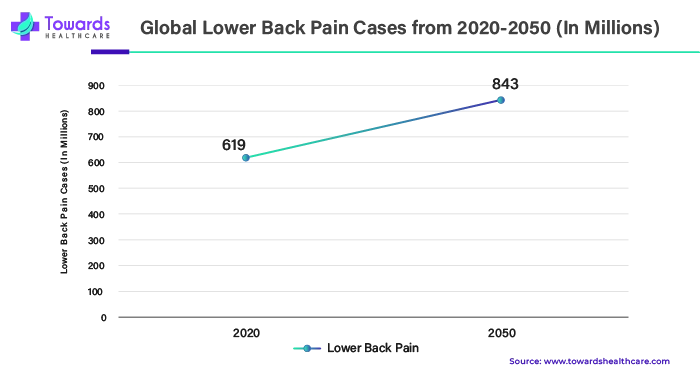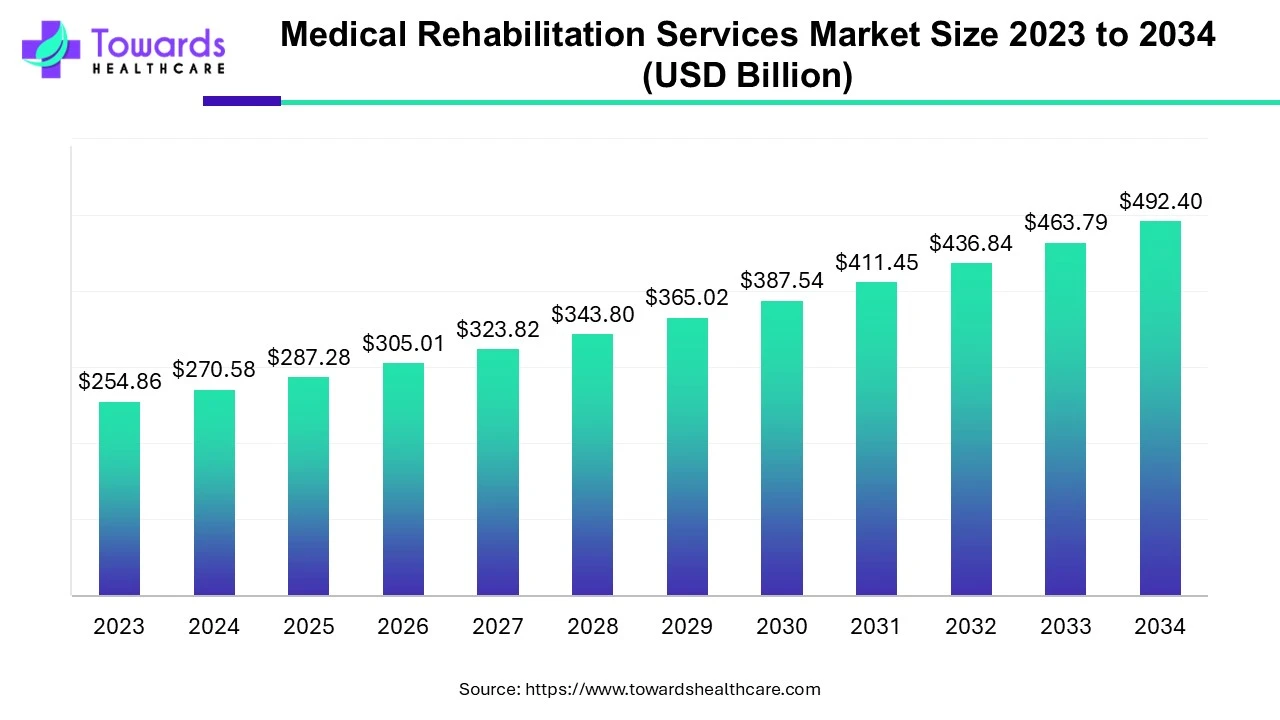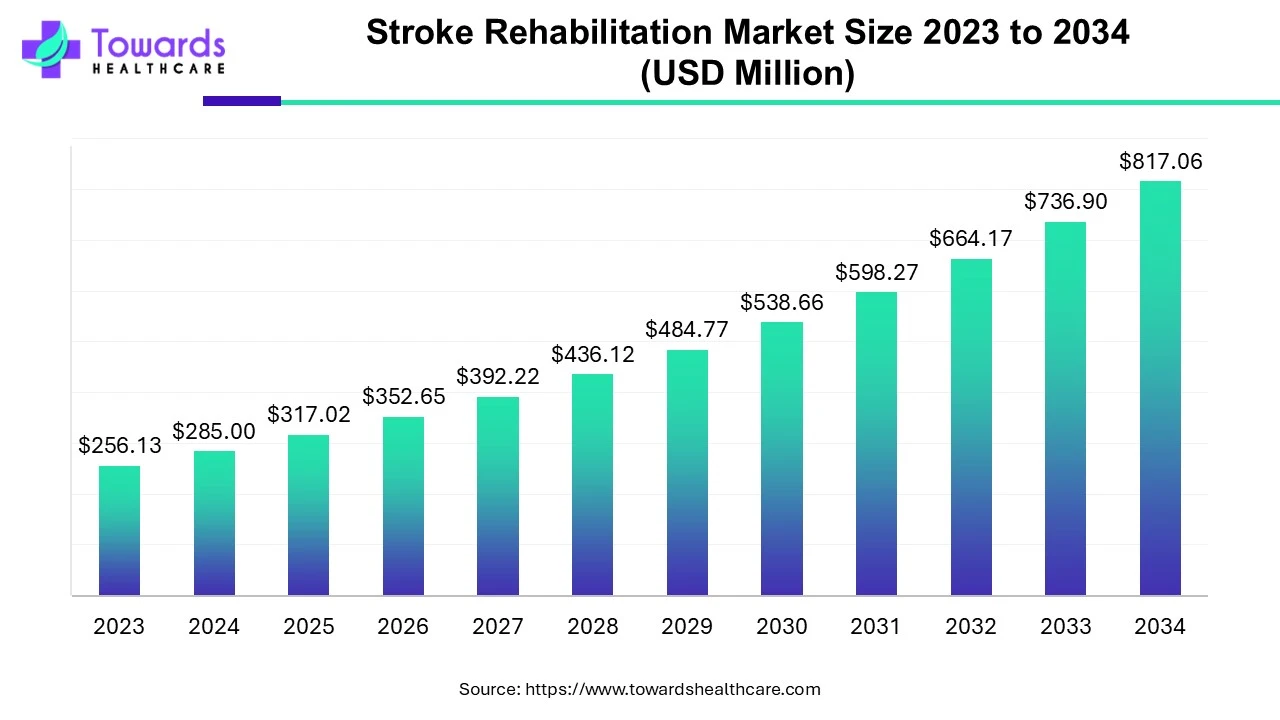
Factors Contributing to Chronic Lower Back Pain and Emerging Treatment Opportunities
Increasing Obesity, Aging Population, and Other Factors Leading to Chronic Lower Back Pain (CLBP)
Lower back pain (LBP) is the leading cause of disability globally and is the condition for which the highest number of people may benefit from rehabilitation. LBP can affect individuals of any age, with the largest age group for LBP patients being between 50 and 55 years old. The prevalence of LBP increases with age, peaking around 80 years old, and it is more common in females.
Several factors contribute to the rising incidence of chronic lower back pain. As people age, particularly those over 30, the spinal disks naturally wear down, leading to discomfort. Obesity also plays a significant role, as excess weight can put additional pressure on the spine. Poor overall health, including weakened muscles and a sedentary lifestyle, can exacerbate back strain. Certain occupations that involve heavy lifting or repetitive bending increase the risk of back injuries. Structural issues, such as scoliosis, can cause severe back pain, and a family history of osteoarthritis, certain cancers, and other diseases can also raise the risk of LBP. Mental health factors, such as depression and anxiety, are known to contribute to back pain as well. By understanding these risk factors, individuals can take preventive measures to maintain a healthy back.
Limited Treatment Options and Their Impact on the CLBP Market
The chronic lower back pain market faces challenges due to the limited treatment options available. The complexity of LBP and the variability in treatment effectiveness among individuals contribute to this limitation. Developing a universally effective treatment strategy is difficult, and the accessibility of non-invasive, non-pharmacological interventions, such as acupuncture, physical therapy, or chiropractic adjustments, can vary. Patients and medical professionals may become unsatisfied due to the lack of widely accepted therapies that work for everyone, highlighting the need for further exploration and innovative ideas in CLBP management.
Artificial Discs as a Growth Opportunity for the CLBP Market
Advancements in spine therapy, particularly the development of artificial discs, present a significant opportunity for the growth of the chronic lower back pain market. Age-related spinal disc deterioration can lead to conditions such as osteoarthritis, nerve entrapment, and spinal cord compression. Traditional treatments, like spinal fusion surgery, have drawbacks, including accelerated disc degeneration in surrounding areas. Simple artificial discs often lack the necessary strength and mobility.
A novel approach involves using stem cells in an artificial polymer gel matrix combined with foam to mimic the properties of a normal spinal disc. Animal experiments have shown that these artificial discs function similarly to natural discs when transplanted successfully. This innovative treatment has the potential to revolutionize the management of degenerative spinal disorders and chronic lower back pain, offering new hope for patients.
Download a sample of this report @ https://www.towardshealthcare.com/personalized-scope/5156
Chronic Lower Back Pain Market Report Highlights
By Drug Class
In 2023, the non-steroidal anti-inflammatory drugs (NSAIDs) segment dominated the chronic lower back pain market. NSAIDs are anti-inflammatory, pain-relieving, and fever-reducing drugs. They are available both over-the-counter and by prescription. Doctors use NSAIDs to treat various conditions, including dental pain, rheumatism, headaches, and strained muscles. For back pain, NSAIDs such as naproxen, ibuprofen, and diclofenac are commonly used, providing minor relief of symptoms. These medications are available in lower dosages over the counter and can also be administered intranasally or in pill form.
The opioids segment held the second-largest share of the chronic lower back pain market and is projected to grow at the fastest rate during the forecast period. Opioids are stronger, prescription-only medications used for low back pain when other treatments are ineffective. Common opioids include morphine, buprenorphine, codeine, hydromorphone, oxycodone, tapentadol, tilidine, and tramadol, varying in potency. Opioids are highly effective in treating a wide range of acute pain conditions.
By Route of Administration
In 2023, the oral segment dominated the chronic lower back pain market. Oral medication administration is common due to its numerous advantages. It is simple, non-invasive, and allows patients to take their medication without injections or complex procedures, improving patient compliance and overall treatment outcomes. Oral medications are also easy to self-administer, reducing the burden on healthcare providers and lowering costs. Additionally, oral drugs are well-absorbed and have predictable absorption patterns, simplifying dose calculations and prescription management. The flexibility in formulation allows for taste masking and extended-release options, enhancing the patient experience.
The topical segment is also growing significantly in the chronic lower back pain market. Topical application delivers immediate, targeted pain relief directly to the affected area. It is easy to use and typically has a better safety profile and fewer side effects compared to oral painkillers. The most common side effect is irritation at the application site. Topical medications are suitable for various pain conditions, including sprains, strains, muscular, neck, shoulder pain, joint pain, arthritis, and more. For example, in April 2024, BackVive was introduced as a new drug-free, over-the-counter solution for chronic back pain. BackVive uses small micro-points embedded in an adhesive patch to deliver pain relief, similar to acupuncture, showing significant pain alleviation in over 90% of clinical study participants.
By Distribution Channel
In 2023, the retail & online segment dominated the chronic lower back pain market. Personalized consultations through walk-in interactions with pharmacists provide information about side effects, interactions, and cost-effective medication alternatives. Pharmacists often collaborate with specialists and primary care physicians for comprehensive treatment plans. Retail pharmacies offer convenience by allowing patients to pick up prescriptions along with daily necessities, saving time and effort. Online pharmacies contribute to the healthcare system by ensuring safe, legal prescription processing, providing detailed pharmaceutical information, and ultimately leading to better health outcomes and efficient resource use. Online pharmacies can enhance drug adherence, reduce costs, improve patient accessibility, and streamline prescription management.
To own our research study instantly, Click here @ https://www.towardshealthcare.com/price/5156
Read more about Chronic Lower Back Pain Market:
You can place an order or ask any questions, please feel free to contact us at sales@towardshealthcare.com
About Us
Healthcare Web Wire is a premier subsidiary of Towards Healthcare, dedicated to providing comprehensive insights and information related to the healthcare industry. With a commitment to delivering accurate and timely updates, Healthcare Web Wire serves as a vital resource for professionals, enthusiasts, and stakeholders within the healthcare sector. Our platform serves as a central hub for the latest news, trends and developments shaping the healthcare landscape. Join us on Healthcare Web Wire and become part of a vibrant community dedicated to advancing healthcare knowledge and shaping the future of healthcare worldwide.
Explore the comprehensive statistics and insights on healthcare industry data and its associated segmentation: Get a Subscription
For Latest Update Follow Us: https://www.linkedin.com/company/towards-healthcare





